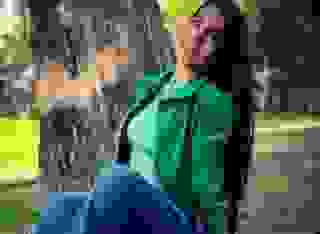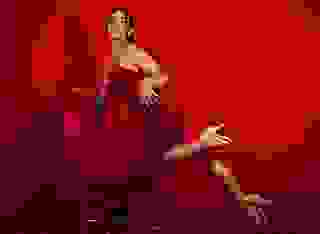- Sci-Fi & Fantasy
- All That Glitters Ch. 05
Note: You can change font size, font face, and turn on dark mode by clicking the "A" icon tab in the Story Info Box.
You can temporarily switch back to a Classic Literotica® experience during our ongoing public Beta testing. Please consider leaving feedback on issues you experience or suggest improvements.
Click hereAll That Glitters Ch 5
Stress for the platform, new faces.
Liramor-23 is damaged, new faces.
Because of the amount of abbreviations in this story, I include a glossary:
Adm. Admiral, naval rank (see Cmdr.) -- above a captain
Capt. Captain, naval rank -- usually a ship's commander
CCO Chief Communications Officer, corporate position
Cdr. Commander, naval rank -- one grade below captain
CIO Chief Information Officer, corporate position
CP Confederation of Planets, referring to the losing side of the Terran Unification War, or just the War
Cmdr. Commodore, first of the admiral ranks (one star), it is followed by Rear Admiral (RAdm. two star), Vice Admiral (VAdm. three star), Fleet Admiral (FAdm. four star, in this story a Sector Commander or equivalent), and Admiral (Adm. five star, usually senior command positions such as Chief of the Navy)
Comp Communication device / personal computer, usually worn on the wrist. Everyone has one, though there are levels of sophistication above the ordinary
Coms O Communications Officer, naval position in charge of comms
CV Cargo Vessel (supply ship)
CPV Corporate Yacht, Corporate Private Vessel (i.e. CPV Liramor One)
CPO Chief Petty Officer, a naval rank, in the story it usually refers to the Boatswain, the senior enlisted rank of a ship, who literally owns the ship, he/she signed for it. The ship's Captain commands, the Boatswain makes sure everything gets done
CSec Chief of Security, corporate position
Dir Director, as in Director of Operations, corporate position
EA/PA Executive / Personal Assistant, corporate position
Exec, Ex O Executive Officer, a ship's principal administrative officer. On small ships the 2nd in command and Ex O can be one and the same. On large ships, they will be separate positions. Americans will tell you it's XO not Ex O, but I'm not American.
EVA Extra Vehicular Activity, in this story referring to a space suit for working in space
FTL Faster Than Light, referring to the multi-light year jump drive. Military warships and some private/corporate yachts have a thirty to thirty-five light year jump capability, while large supply ships usually vary between fifteen to twenty light year capability
HR Human Resources, an administrative function
IFF Identify Friend or Foe, electronic identification system used between naval vessels to identify friendly vessels
JAG Judge Advocate General, military legal system of judges and lawyers
Lt. Lieutenant, naval rank, one grade below LtCdr.
LtCdr. Lieutenant Commander, naval rank -- one grade below Cdr.
Maj. Major, a military rank in the Army or Marines, equivalent to navy LtCdr.
NS Naval Ship (i.e. NS Wimple)
PSec Head of Personal Security, usually the team lead
PV Personal Yacht, Private Vessel
Ops O Operations Officer
SLO Senior Legal Officer, corporate position
SLt Sub-Lieutenant, a naval rank one grade below Lt. and one grade above Ensign
SOps Senior Operations Officer
Tac O Tactical Officer, naval position in charge of tactics
TGA Terran Union Governmental Authority
TUSN Terran Union Space Navy
VSC Veterans Security Company, a personal security company that Liea uses
There is little attempt to explain the back story, so it is necessary to read previous chapters to fully understand where we are.
Once again, a big shout out to SaddleRidder for all the help she provided in editing. Her help has been instrumental to the completion of this chapter.
Please rate and comment. But keep your comments respectful. If you rant and rave or are disrespectful in your commentary, it will be deleted.
'Nuff said...enjoy.
Alien Station, Piscium Star System, 106 Light Years from Terra
FAdm. Thenton, and several other senior officers from the NS Dewfall did have the opportunity to visit the alien station after the Court Martial. They were suitably impressed by what they saw.
They were shown the different bodies of the Insectoid species and given a perspective by the scientists on what they believed the different specimens did, based on the equipment they were using and the locations in which they were found.
They were also shown what was believed to be the queen's chamber and the nursery. The senior officers were not unfamiliar with genocide, but fortunately, they were not inured to it.
The scientists had penetrated and retrieved air samples from the sealed rooms and determined that the aliens lived in an environment similar to humans. The air samples tended to show slightly higher concentrations of oxygen over nitrogen and higher concentrations of exotic gases again at the expense of nitrogen. This led scientists to believe that, while humans could breathe the mixture, that it would smell quite different from what humans were used to.
The scientists had also been able to count the quarters of the aliens and determine a possible low and high number for the aliens on the station. This led them to believe that a low of one half to a high of three-quarters of the station's population had evacuated before or during the attack.
The scientists were able to show some progress on the alien power system. Unlike the electrical systems used by humankind, with its two-polarity imposed power movement and one ground, the alien system seemed to use five separate polarity, none of which appeared to be a ground. The scientists were baffled as to how the system worked and were trying to determine how to charge it in some small way, hoping the system would work like a battery or generator and could recharge once it was brought up from a flat state.
They senior officers spent two days aboard the NS Wimple at the alien station before returning to Liramor-23.
Liramor-23 Mining Platform, Piscium Star System
FAdm. Thenton spoke to Dir. Fiona Marsh, reassuring her on his intent to provide additional ships for system protection. He promised that he would assign at least one more ship and possible a second for system protection, leaving the NS Wimple for scientific investigation.
He left her several maintenance specialists who would place a Navy IFF transponder to help in identifying naval vessels in future and to calibrate FTL arrival and departure lanes for Navy ships coming into the system. He included Lt. Frederic Helmen, a Navy Coms O - now a position dedicated to the station.
Capt. Raymond Clark took the admiral around to look at the preparations that had been made for platform self defence, including the newly modified Rockhounds.
Rockhounds were hardy ships built around the design of a Felton Ship Tug. They were overpowered and capable of pushing heavy objects with great precision. Rockhounds were engines directly attached to pusher arms designed to spread the impact of the engines power against the object needing the push. In the case of Rockhounds, rocks that needed to be brought to the platform for processing.
A normal Rockhound's hull was ten meters in length with pusher arms and engines sticking out from that. It flared back bell shaped from a nose that was three meters wide to being almost eight meters wide at the rear.
Four powerful Golf-Type Pulse Engines for pushing were fitted within the open bell at the rear. The engines were powerful enough to push solid rocks just under a kilometer in size, though it took time to get them up to speed and slow it down on the other end.
The engines stuck out two meters from the open end. In addition, there was a ring of eight mini-thrusters around the ship just behind the bow and just forward of the rear bell opening. These allowed the ship to be moved with great precision.
The four pusher arms were spread out five meters wide at the bow of the ship, and two and a half meters in length from the most forward point of the hull. Their ends were heavily padded to protect the object being pushed from damage on impact.
A large, transparent plasteel window ran completely around the front and sides of the mini ships, giving the pilot an unparalleled view with the four pusher arms split two above and two below the window. The pilot's station was centered in the bow of the ship allowing for a near 260-degree direct view around the ship. Camera's all around the ship fed imagery to the pilot's station giving the pilot a 360-degree bubble view in all directions.
A powerful laser sat centered above the pilot's seat on exterior of the hull, with four smaller lasers situated around it. The large laser would place a beam on the object being pushed where the computer indicated the push should be applied. The laser could project a beam more than four kilometers from the vessel. The ship's automation would place the ship in line with the laser allowing it to home in on the preferred location for pushing with minimal navigation effort from the crew.
The four smaller lasers activated when the ship was within 150m of the target. These lasers focused on where the pusher arms should be as projected by the onboard computers. Sensors in the arms allowed the ship to rotate to place each arm in the ideal location to push, once again with minimal input from the crew.
There were clamps on the dorsal and keel portions of the vessel to hold various equipment too large to be carried in the cabin, this could include sensing equipment, cutting lasers, or extra engines to push larger rocks. Engine packs were often attached to larger rocks so Rockhounds could 'pilot' the rock to the platform. It allowed the vessel to move freely around the rock while it was in transit.
Despite the size of the Rockhounds, there was little room inside for the two-man crew. The crew had to be able to get along, as trips out of the station could be up to three months in duration. Crews usually 'hot bunked' using one bed between them to save space.
Clark's Rockhound, number RH 149, was slightly longer and wider than the norm. He had split the vessel in half and extended it by three meters to provide additional room for himself and his equipment. In addition, he had placed larger clamps outside to hold the larger Foxtrot-Type Pulse engines he often used. He also angled the ships engines slightly so that he could pull a 'trailer' that would be in the wake of the ship but not in the exhaust of the pulse engines.
His vessels number 'RH-149' was emblazoned on either side of the hull in highly reflective yellow paint designed for use in space. In addition, the paint could fluoresce with a small charge running through it. The large bright numbers could be seen for miles.
Because he piloted the Rockhound alone, he had much more room in his vessel than the norm. This allowed him to carry equipment that would not normally be used by other Rockhounds. Clark took advantage of this to carry geological survey equipment that helped him to decide which rocks would be best to bring to station. He had slowly begun to jury-rig a method of including sensor packs into the hull of the ship with data being streamed to the ships instrument panel. He was trying to find away to include the information stream into the pilot's holo-vid navigation and instrument monitor. But the small vessels did not have a robust enough AI system to include that, so he had temporarily included a second smaller holo-vid monitor for the far more precise survey equipment.
On the ten Rockhounds being used for the platform's defence, Clark had welded tubes port and starboard on the vessels. The eighty-centimeter tubes held two rockets each, one behind the other, that could be fired at enemy ships in defence of the station. The rockets had no warheads, but their kinetic energy was sufficient to cause severe damage to sub-light engines, FTL vanes and even some smaller gun turrets. They could also penetrate the hulls of vessels such as Tung Class Frigates or smaller ships but not the Fairling Class Frigates or larger ships.
Clark showed the admiral how he could take the padding off the pusher arms and place spiked ends made out of tungsten on them. With the power and precision of a Rockhound behind it, these could shred a ship's hull venting it to space. All ships in space had isolated hull sections secured behind armoured bulkheads and hatches. But running a tear down the side of the ship, end to end, would bypass every bulkhead on a ship. Do that along each deck and a ship would catastrophically loose all of its air.
The power that allowed Rockhounds to push kilometer sized rocks, meant that they could push any ship in the fleet, even the Dreadnaught Class Battleships. Overall, the little vessels would be a formidable threat to almost any vessels that entered the Piscium system. Clark planned to mount tubes on twenty of the Rockhounds.
Then there were the mines. Clark had created a hybrid Limpet mine that had a powerful AI computer capability relative to its size. Within the confines of its programs, one of these mines could be a threat to even the NS Dewfall. The mines were designed to seek out engines and weapons on the ships they attacked and attach to them directly. They had the ability to communicate with each other to ensure that only so many mines attached to specific vulnerable locations on ships.
The mines also had the ability to 'hide' themselves with small rocks to make themselves look like boulders. Clark and his crew had created more than 500 of the Limpet mines, placing many in locations that would be the logical entry points of ships into the system.
Clark had also created a semi-controllable barricade mine. These mines could be dropped from a ship in specific locations and could 'talk' to each other to determine the best configuration for blocking an enemy ship's progress. They could be detonated by contact or by the proximity of a ship. He now had more than 3,000 of these mines but would need more to act as a proper barricade.
Clark had figured that he would need 3,500 of the Limpet mines and minimum 10,000 of the barricade mines. Thenton agreed with his assessment.
Thenton was suitably impressed with the platforms work. Now more than ever he was happy to have Capt. Clark under his command. Before he NS Dewfall departed, the admiral left several Navy FTL comms probes for the Coms O. He also indicated that he would assist with the building of the different mines and would provide a Navy supply ship at least once a month to assist in that project and bring in surplus navy mines.
FAdm. Thenton took his leave of the delightful Ms. Marsh, now dressed in her navy jumpsuit, Capt. Clark, and Capt. Whatt and boarded the shuttle back to the NS Dewfall. Forty minutes later, the Dewfall came to speed and jumped from the system. It seemed rather anti-climatic to those left behind when the ship left.
Pallanders Shipyard, Liramor Prime, Liramor Star System, Thirty Light Years from Terra
Liea was ecstatic. Today was the day she would go to Pallanders Shipyard to look at options for her own private space yacht. She could hardly sleep the night before, getting up and pacing frequently before laying down and trying to sleep again.
She went through breakfast at light speed, showered and slipped into a functional but designer space suit, her own original deck boots on her feet. When the time came, she virtually ran down to the lobby to jump aboard the airborne limo that had been provided for her by Veterans Security Company, her private security.
Liea went over some brochures from Pallanders and itemized the things she thought she might want while Lisette took notes. Analisa Talbot, Liea's Personal Security Agent from VSC, shook her head in disbelief at the antics of the two women. She was aware that her client was wealthy and was not privy to her actual worth but to be able to buy a personal space yacht? That would take many millions of credits even for a small yacht. She sat back and paid attention to her job which, at the moment, consisted of watching for vehicles around them behaving abnormally as they flew to their destination and that her detail was working efficiently.
When the limo set down on the pad in front of the Pallanders Headquarters Building, things changed dramatically. Talbot stepped out onto a red carpet underfoot. She looked around warily and then opened the door for Liea and her EA.
Six Pallanders executives came forward to greet Liea with all the panache of low-level planetary government functionaries greeting the President of the Union. Talbot felt the hairs on the back of her neck rising up at the scene. The thought crossed her mind that maybe her client was a lot richer than she had first assumed!
"Good morning, Ms. Samson. I am François Pallanders, President of Pallanders Shipyard. I am very pleased to meet you this morning," he simpered.
"Good morning, Mr. Pallanders. I am likewise pleased to meet you. I have been told that your company provided the corporate yacht Liramor One for the Liramor family. Annette Liramor herself recommended you. I do hope that Annette's faith in you is justified?" She asked.
"Most assuredly, madame. Pallanders provides very high-end yachts and other vessels for many of the companies on Liramor Prime and for many clients throughout Union space. We have everything that you would need and, if we don't have it, we can get it or build it.
"We are the go-to company for personal yachts in this Sector. We can build a small yacht from scratch in six months or make over a larger ship in even less time if that is your desire," he said with a practised smile.
He turned and introduced his staff, the Vice President of Sales, the VP of Procurement, the VP of Finances, the Chief Foreman of Construction, the Chief Interior Designer, and two aides to take notes. Liea introduced Lissette as her EA, and Ms. Talbot as her PSec.
The Pallanders group lead Liea into their building and began to show her models of yachts based on small vessels, but she quickly shut that down.
"I'm looking for a yacht based on a Tung Class Frigate, like Liramor One, or on a Fairling Class Frigate. Having been aboard Liramor One, I was reasonably impressed with what I saw, and the size is good for my needs. Annette, however, advised that I might like to move up one class to the Fairling model," she stated.
"Forgive me Ms. Samson, but how do you intend to pay for that?" Asked the VP Finances.
"Cash of course." She replied.
"Cash?" He returned, somewhat surprised. "Purchasing and modifying a Fairling Class could exceed C500 million. And you intend to pay for that in cash?" He asked surprised.
"Well, yes," Liea returned casually. "I received a royalty of one billion Credits recently and will be receiving several more each quarter for the remainder of this year," she stated matter of factly.
"You may contact my bank and speak to any of the managers there and ask them to verify my recent royalty check," and she gave them the name of her bank.








